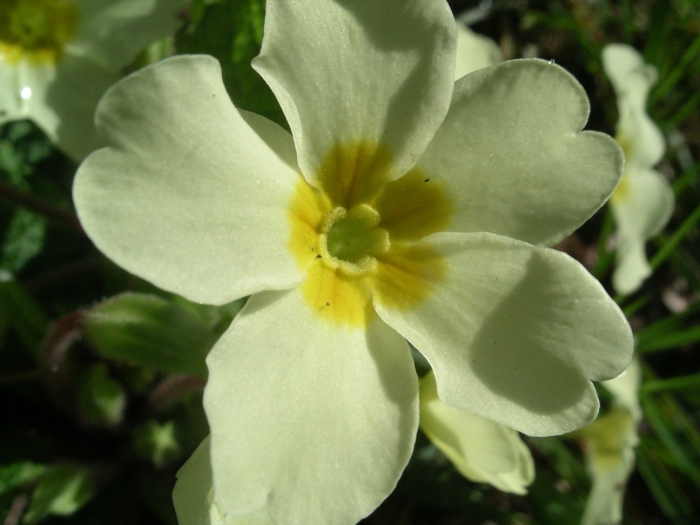Primrose
(Primula vulgaris)
Primrose (Primula vulgaris)
/
/

Public domain
Public domain










































































Estimated Native Range
Summary
Primrose is valued for its early spring flowers, which are among the first to bloom and can be quite showy, signaling the end of winter. It is often used in woodland gardens, rock gardens, and as underplanting for shrubs and trees. Primroses prefer moist, humus-rich soil with good drainage and thrive in part shade, although they can tolerate full sun in cooler climates. They require consistent moisture but should not be waterlogged. While generally easy to maintain, they can be susceptible to slugs and snails, which find the foliage particularly appetizing. Primroses are not typically invasive but can self-seed under optimal conditions.CC BY-SA 4.0
Plant Description
- Plant Type: Herb
- Height: 0.3-0.5 feet
- Width: 0.3-0.8 feet
- Growth Rate: Moderate
- Flower Color: Yellow
- Flowering Season: Spring
- Leaf Retention: Semi-deciduous
Growth Requirements
- Sun: Part Shade
- Water: Medium
- Drainage: Medium
Common Uses
Bank Stabilization, Bee Garden, Bird Garden, Border Plant, Butterfly Garden, Deer Resistant, Edible*Disclaimer: Easyscape's listed plant edibility is for informational use. Always verify the safety and proper identification of any plant before consumption., Fragrant, Groundcover, Hummingbird Garden, Potted Plant, Rabbit Resistant, Rock Garden, Salt Tolerant, Showy Flowers, Water Garden
Natural Habitat
native to a wide range of habitats across Europe, including open woodlands, forest edges, and grassy banks, extending into the Caucasus
Other Names
Common Names:
Scientific Names: , Primula vulgaris, Primula acaulis subsp. acaulis, Primula acaulis, Primula grandiflora, Primula variabilis, Primula minima, Primula rosea, Primula sibthorpii, Primula veris var. acaulis
GBIF Accepted Name: Primula acaulis subsp. acaulis